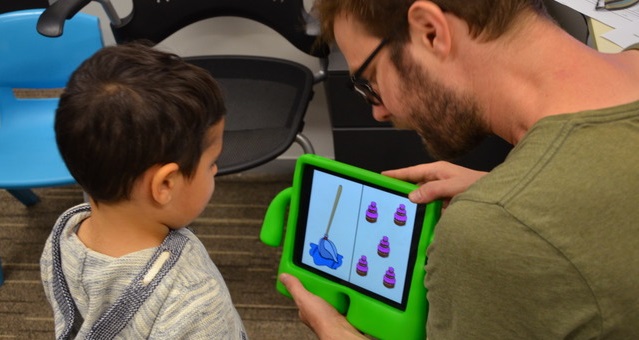Child Language Acquisition

Our Linguistics Department probably has the highest concentration of researchers in child language in the world, grouped within the Child Language Lab and the Language Acquisition Lab! We investigate aspects of children’s phonological, morphological, syntactic, semantic and pragmatic knowledge, language processing abilities, as well as the learnability implications of the language input from parents and carers. Many of our studies focus on English, but we also have current research investigating Mandarin Chinese-speaking children and adults. We also investigate how aspects of language, working memory, etc. contribute to the learning of other skills, such as reading. Our researchers investigate the acquisition of language in typically-developing children, children with specific language impairment/developmental language delay, bilingual children and children with hearing loss.
Areas of interest
Acquisition of phonology and morphology
Most researchers working in this area are members of the Child Language Lab (CLL). We use behavioural methods to explore how children’s knowledge of words and sentences develops over time, identifying the phonological/prosodic issues that govern word formation, and the implications for the use of grammatical function words and inflectional morphology. Much of this research explores the nature of the input (infant and child directed speech), and uses speech perception/comprehension experiments (including eye-tracking) as well as acoustic analysis of children’s productions, especially in pre-schoolers, including bilinguals and those with hearing loss. Our goal is to better understand the processes underlying the development of phonological, morphological and lexical representations in order to guide the construction of more effective language interventions for children at risk for language delay.
Acquisition of syntax and semantics
Most researchers who study syntax and semantics are members of the Language Acquisition Lab (LAL). Many research projects are couched within the biolinguistic approach to language. We investigate what aspects of children’s knowledge of acquisition of syntax and semantics are guided by abstract linguistic knowledge, and what aspects are learned from the input. We are interested in how children map their innate linguistic knowledge onto the input, and how children understand structures for which there is little evidence in the language of parents and carers. To get an in-depth understanding of children’s linguistic knowledge we carry out behavioural experiments with pre-school children, using the production technique of elicited production and the comprehension task known as the truth value judgement task.
Language processing in the brain
Most researchers in this area are members of the Child Language Lab. The goal of this research is to better understand how the brain processes different types of phonological, lexical and morphosyntactic information in real time (using EEG/MEG), and how this varies as a function of population (e.g. L1 vs. L2 English-speaking adults, monolingual and bilingual school-aged children). The findings provide critical insight into how learners/language users process different types of information during sentence comprehension. Some of this research is carried out concurrently with eye-tracking – either in the visual or auditory domain.
Our people
Current researchers
Dr. Titia Benders
Professor Felicity Cox
Distinguished Professor Stephen Crain
Professor Linda Cupples
Dr. Ben Davies
Distinguished Professor Katherine Demuth
Dr. Iain Giblin
Dr. Rebecca Holt
Dr. Jae-Hyun Kim
Dr. Loes Koring
Associate Professor Mridula Sharma
Professor Rosalind Thornton
Dr. Nan Xu Rattanasone
Dr. Ivan Yuen
Research coordinators and assistants
Dr. Isabel O'Keeffe (Child Language Lab Coordinator, Centre for Language Sciences Coordinator)
Content owner: Department of Linguistics Last updated: 12 Mar 2024 9:11am
